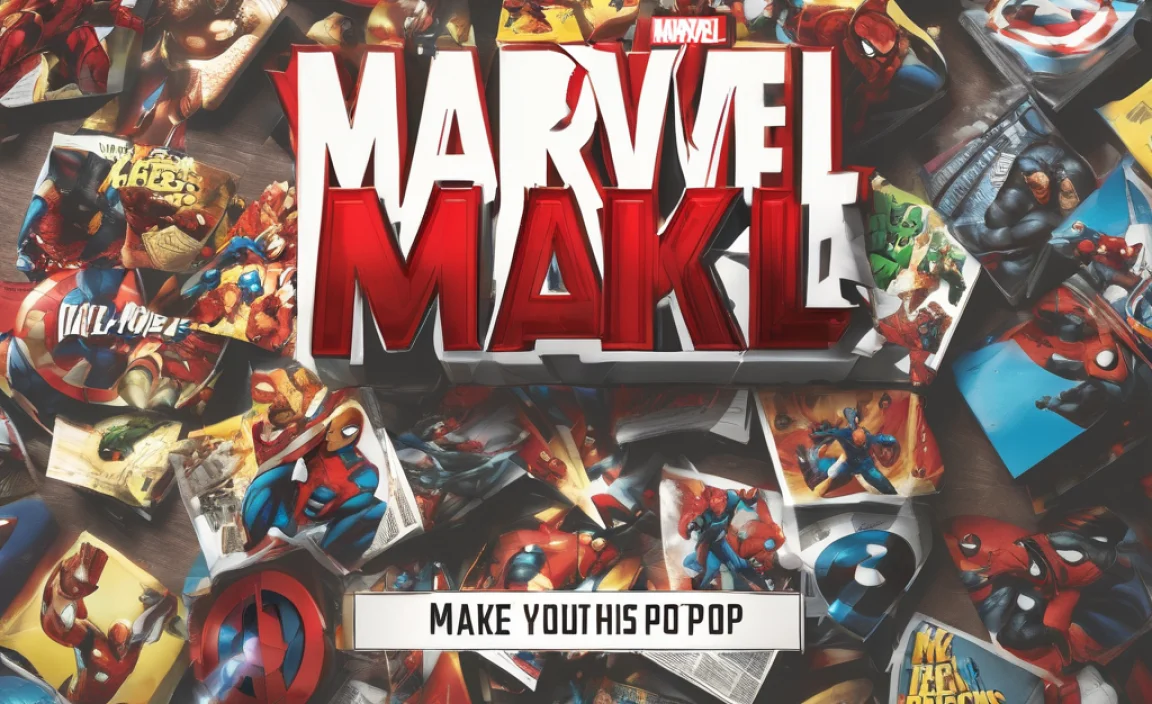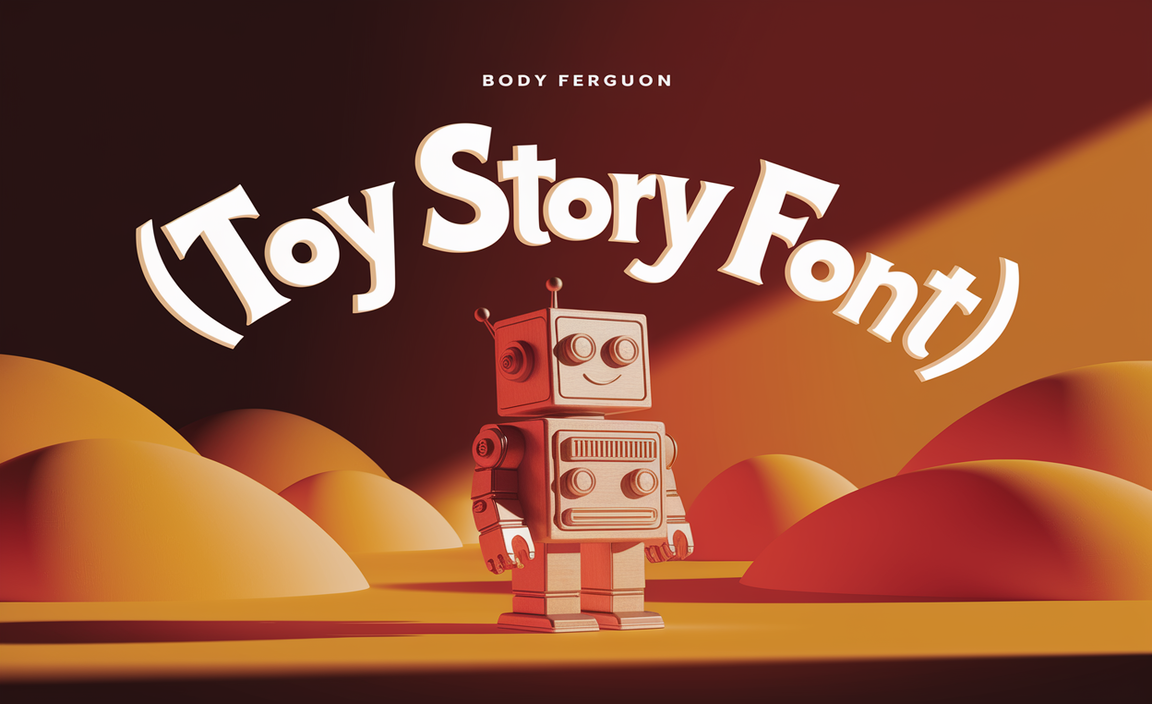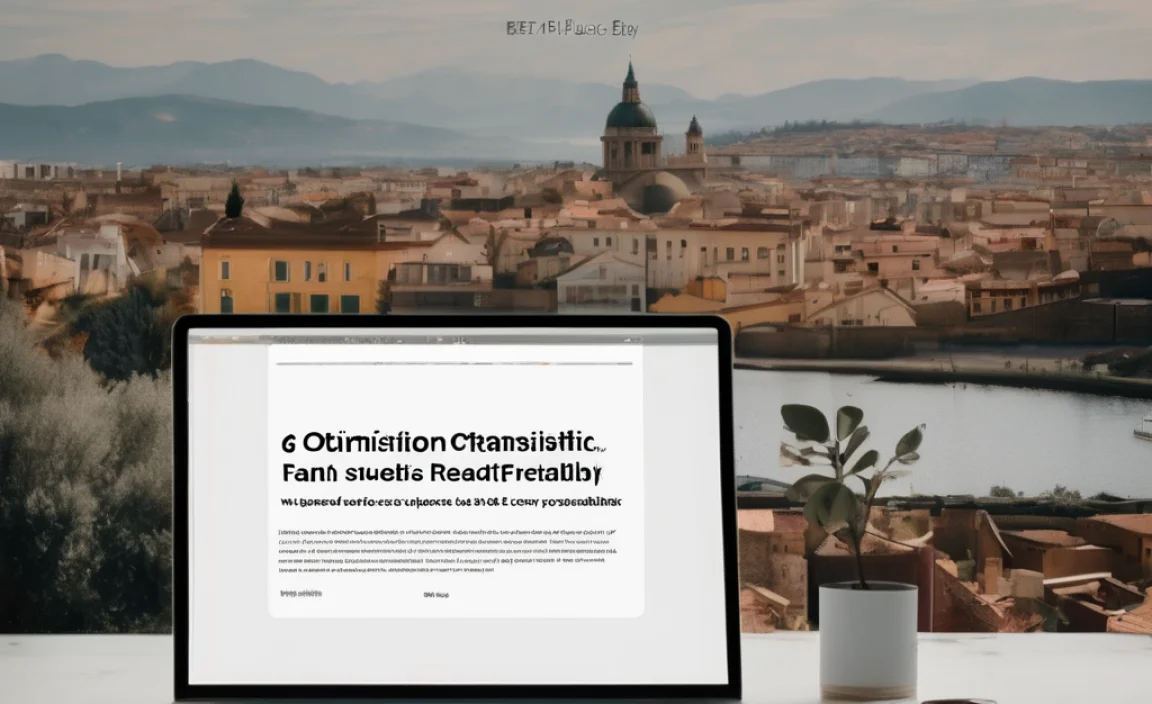Quick Summary:
The “Save Rock and Roll” font is a bold, impactful display typeface perfect for making a statement. This guide will help you find, use, and pair this energetic font like a pro, ensuring your designs grab attention with rockstar style.
Are you looking for a font that screams energy and commands attention? Perhaps you’ve seen the “Save Rock and Roll” font and loved its distinctive, powerful vibe. It’s a popular choice for projects that need that extra punch – posters, album covers, and bold headlines. But figuring out where to find it and how to use it effectively can sometimes feel like a quest. Don’t worry! This guide is here to make it super simple. We’ll walk you through everything you need to know to use this amazing font, ensuring your creative projects hit all the right notes. Get ready to infuse your designs with pure rock and roll spirit!
What is the “Save Rock and Roll” Font?
The “Save Rock and Roll” font is a distinctive display typeface that captures the raw, rebellious spirit of classic rock music. It’s not just a font; it’s an attitude. Designed to make a bold statement, it features strong lines, a somewhat gritty aesthetic, and a sense of urgency. Think loud guitars, flashing lights, and an unstoppable energy. This font is ideal for designs that need to feel dynamic, edgy, and unforgettable. It’s often used in contexts that celebrate music, youth culture, or anything that requires a high-impact visual presence.
Key Characteristics of the Font
- Bold & Impactful: It’s designed to be seen and make a strong impression from a distance.
- Edgy Aesthetic: The letterforms often have a slightly distressed or rough texture, adding to its rock-and-roll feel.
- High Contrast: Often, there’s a noticeable difference between thick and thin strokes, adding drama.
- Versatile Display Use: Excellent for headlines, titles, logos, and other short bursts of text where legibility at small sizes isn’t the primary concern.
- Expressive: Conveys emotion and energy, making it perfect for vibrant and exciting projects.
Finding the “Save Rock and Roll” Font
Locating this specific font is usually straightforward, as it’s quite popular. Most commonly, when people refer to the “Save Rock and Roll” font, they’re thinking of a typeface that embodies that particular style. There are several excellent options available, some free and some that require a purchase.
Where to Look:
- Font Marketplaces: Websites like MyFonts, Fontspring, and Adobe Fonts often have commercial licenses for fonts that fit this description. You might find the exact font or very similar alternatives here.
- Free Font Sites: Occasionally, similar styles can be found on free font repositories like Google Fonts or DaFont. Always check the licensing for personal and commercial use when downloading free fonts.
- Specific Font Names: Sometimes, the font might be available under a slightly different name that captures the same essence. Searching for “rock display font,” “grunge font,” or “bold headline font” can yield great results.
Licensing Considerations:
Before you download or use any font, it’s crucial to understand its licensing. This is especially important if you plan to use the font for commercial projects (e.g., for a business logo, product packaging, or website). Free fonts might be limited to personal use, while commercial licenses often come with a cost. Always review the terms of use provided by the font foundry or creator. Resources like U.S. Copyright Office circulars on copyright basics can offer general understanding of intellectual property rights, though font licenses are specific contractual agreements.
How to Use the “Save Rock and Roll” Font Effectively
Now that you know where to find it, let’s talk about making this font sing in your designs. Its powerful character means it’s best used strategically.
Best Use Cases:
- Headlines & Titles: This is where it truly shines. Use it for main titles on posters, flyers, website banners, and album art.
- Logos: For brands that want to project a bold, energetic, or rebellious image, it can make a fantastic logo.
- Call-to-Action (CTA) Buttons: On a website or app, a CTA in this font can grab immediate attention.
- Short, Punchy Text: Think taglines, slogans, or impactful quotes.
Avoid Using It For:
- Body Text: The intricate or bold nature of display fonts like this can make them difficult to read in long paragraphs.
- Small Print: Fine details can get lost, making it illegible.
- Formal Documents: It’s generally too informal and energetic for business reports or academic papers.
Pairing the “Save Rock and Roll” Font with Other Fonts
A great design often involves more than one font. Pairing your “Save Rock and Roll” font with other typefaces can create visual interest and convey different messages within a single design. The key is to find fonts that complement its style without competing with it.
Finding Complementary Styles:
Think of your “Save Rock and Roll” font as the rockstar lead singer – it deserves the spotlight. The other fonts in your design will be the supporting band members, providing rhythm and harmony.
- Sans Serif Fonts: Clean, modern sans serif fonts are excellent partners. They provide a sense of order and clarity that balances the energy of the display font. Look for simple, geometric, or humanist sans serifs.
- Serif Fonts: For a more classic or sophisticated contrast, consider a strong serif font. This can create an interesting juxtaposition between old and new, or between rebelliousness and tradition.
- Monospace Fonts: If you’re going for a techy or slightly retro vibe, a monospace font can add a unique texture.
Ideal Pairing Combinations:
Here are some combinations that work well:
| “Save Rock and Roll” Font (Headline) | Complementary Font (Body Text/Subheadings) | Why it Works |
|---|---|---|
| Bold, grimy display font | Clean, readable sans serif (e.g., Open Sans, Lato, Montserrat) | Provides a clear, unobtrusive base for information, letting the headline grab attention. |
| Energetic, statement font | Classic serif font (e.g., Georgia, Merriweather, Playfair Display) | Creates a dynamic contrast, adding depth and a touch of elegance or heritage to the edgy headline. |
| Aggressive, stylized font | Simple, functional monospace font (e.g., Roboto Mono, Source Code Pro) | Offers a structured, almost code-like feel that can make the bold font seem even more like a deliberate artistic choice. |
| “Save Rock and Roll”-esque font | Another sans serif, but perhaps a condensed or slightly more geometric one. | Keeps the overall feel modern and punchy, with clear hierarchy between the headline and supporting text. |
Tips for Successful Pairing:
- Hierarchy is Key: Ensure the “Save Rock and Roll” font is used for the most important elements, and supporting fonts handle secondary information clearly.
- Contrast, Not Conflict: Aim for fonts that are different enough to stand out but not so radically different that they clash.
- Readability First: Always prioritize readability for the majority of your text. The display font is for impact, the others are for conveying information.
- Limit the Palette: Stick to two or three fonts max for a cohesive design.
Step-by-Step Guide to Using the Font in Your Design Software
Using a new font in your favorite design tool is exciting! Here’s how to get started, whether you’re using Adobe Photoshop, Illustrator, Canva, or another popular program.
Step 1: Install the Font
Once you’ve downloaded your font (make sure it’s from a legitimate source!), you’ll need to install it on your computer. This process is usually very simple:
- Locate the Font File: Find the downloaded font file, which is often in a `.ttf` (TrueType Font) or `.otf` (OpenType Font) format.
- Windows: Right-click on the font file and select “Install.”
- macOS: Double-click the font file. A Font Book window will open; click “Install Font.”
Step 2: Open Your Design Software
Launch your preferred design application. For this example, let’s assume you’re using Adobe Illustrator or Photoshop.
Step 3: Create or Select Text
- New Text: Select the Type Tool (usually represented by a ‘T’ icon). Click on your canvas and start typing your desired text (e.g., “Save Rock and Roll”).
- Existing Text: If you have existing text you want to change, select it using the Type Tool.
Step 4: Apply the Font
- Find the Font Menu: In most software, you’ll find the font selection menu at the top of your screen, in a character panel, or a dedicated text properties panel.
- Search for Your Font: Type the name of the font you installed (e.g., “Save Rock and Roll” or a similar name). It should appear in the dropdown list.
- Select Your Font: Click on the font name to apply it to your selected text.
Step 5: Adjust and Style
Once the font is applied, you can tweak it further:
- Size: Increase or decrease the font size to fit your design.
- Color: Choose a color that stands out or complements your design.
- Kerning & Tracking: Slightly adjust the spacing between letters (kerning) or uniformly between groups of letters (tracking) for optimal readability and visual appeal.
- Stylistic Alternates: Some complex fonts offer stylistic alternates (different versions of letters). Explore these in the character panel if available.
- Effects: Consider adding subtle effects like shadows or outlines if they enhance the rock-and-roll theme without sacrificing legibility.
Using Fonts in Canva or Web Editors:
If you’re using tools like Canva or a website builder, the process is often even simpler:
- Canva: After uploading your font (if it’s not already available), you can select it from the font dropdown menu in the text editor.
- Website Builders: Most platforms allow you to upload custom fonts or select from a library. Follow your specific platform’s instructions for adding fonts to your site’s stylesheet.
Alternative Fonts with a Rock and Roll Vibe
If you can’t find the exact “Save Rock and Roll” font, or want to explore more options that capture a similar energetic and bold spirit, consider these alternatives. These fonts often share characteristics like strong outlines, distressed textures, or an overall sense of power.
| Font Name | Description | Where to Find (General) |
|---|---|---|
| Bebas Neue | A popular, condensed sans-serif that’s bold and highly legible, excellent for headlines. | Google Fonts |
| Anton | A sturdy, condensed display font with a retro feel, perfect for impactful titles. | Google Fonts |
| Impact | A classic, ultra-bold condensed sans-serif that’s been a go-to for decades for strong headlines. | Often pre-installed on Windows; available from font sites. |
| Oswald | A versatile typeface designed for screens, with a condensed, strong uppercase suitable for headlines. | Google Fonts |
| Lobster | A fun, retro script font that, while different, can evoke a vintage, energetic, almost hand-drawn rock poster feel. | Google Fonts |
| League Gothic | A tall, condensed, all-caps typeface with a strong gothic influence, great for titles. | League of Moveable Type, Google Fonts |
When searching for these, pay attention to their licensing. Many of these are available on Google Fonts, which offers open-source licenses suitable for almost any project, personal or commercial. This is a fantastic resource for designers looking for high-quality, free typography.
Why the Right Font Matters for Your Brand
Choosing the right font is more than just picking something that looks cool. It’s about communicating your brand’s personality and values effectively. A font like “Save Rock and Roll” can instantly tell your audience that your brand is:
- Bold and Confident: It doesn’t shy away from making a statement.
- Energetic and Dynamic: It suggests passion and action.
- Edgy or Rebellious: It appeals to a desire to break from the norm.
- Fun and Youthful: It can convey a sense of excitement and contemporary relevance.
Font Psychology and Brand Identity
Different font styles evoke distinct psychological responses. A bold, strong font like the “Save Rock and Roll” style can create a feeling of power and urgency. This is why it’s often used in advertising for events, music, or products that want to capture attention and convey excitement. Understanding this “font psychology” helps you align visual choices with your brand’s overall message. For instance, a bank would likely choose a conservative serif or a stable sans-serif, while a music festival would lean towards something much more expressive and bold. For more on visual communication principles, exploring the resources from design institutions like the AIGA (American Institute of Graphic Arts) can provide deeper insights into the impact of design choices.
FAQ About the “Save Rock and Roll” Font
What is the exact font name for “Save Rock and Roll”?
While “Save Rock and Roll” is a popular descriptor, the exact font might vary. Often, it refers to a specific display font with that name or a very similar style. If you’ve seen it on a poster, searching for that specific poster’s design credit or looking for fonts with similar characteristics (bold, gritty, display) is your best bet.
Is the “Save Rock and Roll” font free?
Some fonts that look like it can be found for free (often on Google Fonts or










